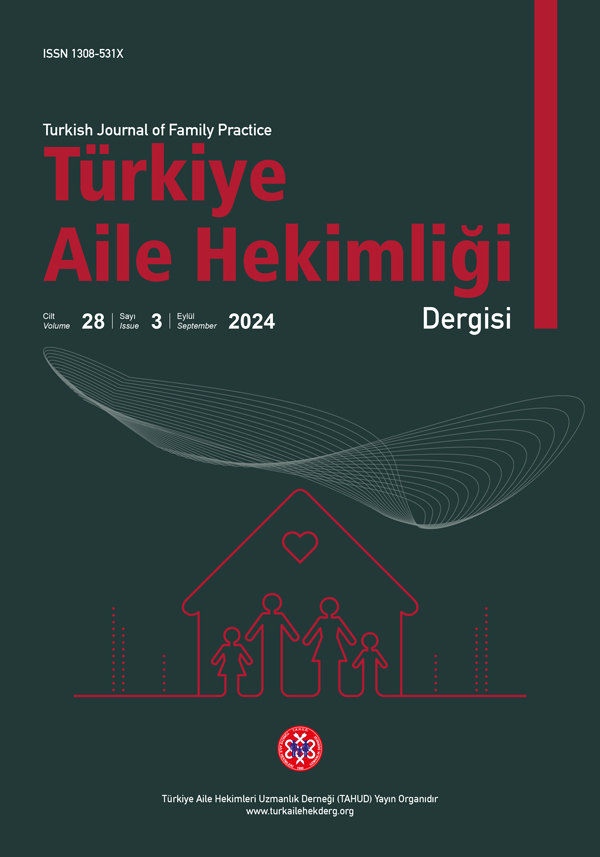





Evlilik Öncesi Sağlık Raporlarının Tanziminde Yaşanan Sorunlar
Kemal Murat ÜnalmışKadıköy Kozyatağı Aile Sağlığı Merkezi, İstanbul, TürkiyeEvlilik öncesi sağlık raporu tanzimleri, kimisi oldukça eski farklı kanun ile kimi zaman birbirleri ve güncel uygulamalar ile çelişebilen, güncel gereksinimlere bazı hususlarda tam cevap veremeyen ilgili mevzuatlar doğrultusunda yapılmaktadır. Ancak mevzuatı, bürokratik ve tıbbi tam bir standardizasyonu olmadığı için tanzim edecek hekimler, evlendirme işlemini yapacak belediyeler hatta il ve ilçe sağlık müdürlüklerinin yönlendirmeleri arasında farklılıklar görülebilmektedir.
Mevzuatta hem özel hem de kamu hekimleri ve özellikle hükümet tabiplerinin isimlerinin geçmesine rağmen uygulamada evlilik öncesi sağlık raporları hemen daima aile hekimlerinin yükümlülüğüne verilmiştir.
Yine amir kanun ve yönetmelikler doğrultusunda muayene ve belirli hastalık gruplarının taranması ile rapor verilmesi öngörülmüş, daha sonra çıkartılan ek mevzuatlar ve rehberlerle evliliğe engel olmayan hastalık ve taramalar ile de kapsam genişletilmiştir. Ancak uygulamada hem raporu verecek hekim tarafından E-Nabız üzerinden yapılacak özgeçmiş incelemesinde engeller hem tahlil ve tetkiklerin standardizasyonunda eksiklikler hem de kadın ile erkek adaylar arasında öngörülen tahlillerin farklılıkları dolayısı ile sorunlar yaşanmaktadır.
Sonuç olarak, evlilik öncesi sağlık raporların tanziminde, normlar hiyerarşisine uygun mevzuat doğrultusunda görevlendirme yapılması ya da mevzuatın uygun hale getirilmesi; rapor verme yeterliliği olan tüm kurumların bu raporların tanziminde yetkilerinin tanınması; rapor tanziminde yetkili hekimlerin hastanın E-Nabız sayfasındaki bütün bilgileri görebilmesinin sağlanması; tıbbi ve bürokratik sürecin ve kullanılacak matbu formların güncel standardizasyonu ile muayene ve tetkik ile tahlillerde cinsiyetler arasındaki farklılığın ortadan kaldırılması uygun olacaktır.
Problems Experienced in The Preparation of Reports of Medical Examination for Marriage
Kemal Murat ÜnalmışKadıköy Kozyatağı Family Health Center, İstanbul, TürkiyePreparation of reports of medical examination for marriage are made according to different laws, some of which are quite old, and relevant legislation, which may sometimes conflict with each other and with current practices, and cannot fully respond to current needs in some respects. However, since there is no full legislative, bureaucratic and medical standardization, there may be differences between the guidance of the physicians who will maintain the examinations, the municipalities that will perform the marriage, and even the provincial and district health directorates.
Although the names of both freelance and public physicians, and especially “government physicians”*, are mentioned in the legislation, reports of medical examination for marriage are almost always within the responsibility of family physicians in current practice.
Again, according to the governing laws and regulations, it was envisioned to issue a report by examination and screening of certain disease groups, and with the additional legislation and guidelines issued later, the scope was expanded with diseases and screenings that do not prevent marriage. However, in practice, there are problems in the medical resume review to be carried out via E-Pulse** by the physician who will issue the report, due to obstacles, deficiencies in the standardization of analyzes and examinations, and differences in the prescribed tests between male and female candidates.
In conclusion, in the preparation of reports of medical examination for marriage, assigning or harmonizing the legislation in line with the hierarchy of norms; Recognizing the authority of all institutions qualified to report in the preparation of these reports; Ensuring that authorized physicians can see all the information on the patient’s E-Pulse page when preparing the report; up to date standardization of both medical and bureaucratic processes and the structure of printed forms used in the process and eliminating the differences genders in tests and analyses would be more appropriate.
Makale Dili: Türkçe








